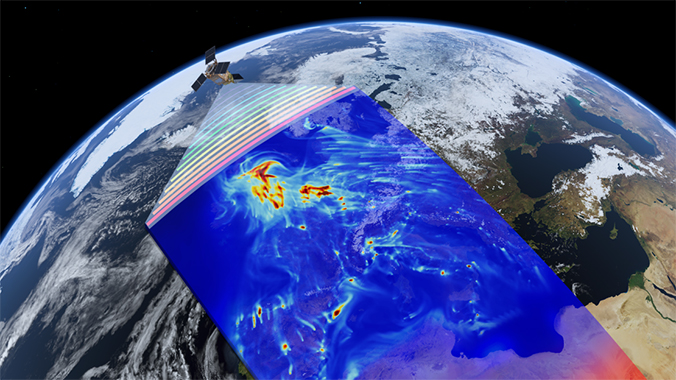Publié le 30 octobre 2017
The first Copernicus mission dedicated to monitoring our atmosphere, Sentinel‑5P, has been launched from the Plesetsk Cosmodrome in northern Russia.

The 820 kg satellite was carried into orbit on a Rockot launcher at 09:27 GMT (11:27 CEST) on 13 October 2017.
The mission is one of six families of dedicated missions that make up the core of Europe’s Copernicus environmental monitoring network. Copernicus relies on the Sentinels and contributing missions to provide data for monitoring the environment and supporting civil security activities. Sentinel-5P carries the state-of-the-art Tropomi to do just that.
Developed jointly by ESA and the Netherlands Space Office, Tropomi will map a multitude of trace gases such as nitrogen dioxide, ozone, formaldehyde, sulphur dioxide, methane, carbon monoxide and aerosols – all of which affect the air we breathe and therefore our health, and our climate.
Sentinel-5P was developed to reduce data gaps between the Envisat satellite – in particular the Sciamachy instrument – and the launch of Sentinel-5, and to complement the GOME-2 sensor on the MetOp satellite.
“Having Sentinel-5P in orbit will give us daily and global views at our atmosphere with a precision we never had before,” said Josef Aschbacher, ESA’s Director of Earth Observation Programmes.
“Our historic data records, together with the long-term perspective of the Copernicus satellite programme, opens the doors for generating datasets spanning decades – a prerequisite to understanding our ever-changing Earth. ”
In the future, both the geostationary Sentinel-4 and polar-orbiting Sentinel‑5 missions will monitor the composition of the atmosphere for Copernicus Atmosphere Services. Both missions will be carried on meteorological satellites operated by Eumetsat.
Until then, the Sentinel-5P mission will play a key role in monitoring and tracking air pollution.